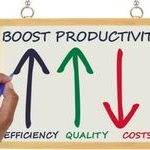As impressive, and unlikely as it would have been, no professional sports coach has made a career out of designing game plans alone in the basement with no exterior factors. For any coach to achieve success and victory, they must overcome and defeat whatever their opposition is. To do so, they must first gain an understanding of who their opposition is, what they are good at, and what their weaknesses are. Even the most thoughtful game plan will be rendered useless against a team that it was not designed for. This is just the cutthroat and small-margined nature of professional sports. If a team is not engineered to win in a specific manner over their opponent, going under is likely. All that being said, the same kind of culture exists within business, and some know it as product-market fit. Marc Andreessen, the Co-Founder of Netscape, spoke to it, “The life of any startup can be divided into two parts — before product/market fit and after product/market fit.”
What if a company finds themselves in that first category, the one before product-market fit? They are in luck! Below, we have organized the thoughts of some with hands-on product-market fit experience to point these companies in the right direction.

What is Product-Market Fit?
Maybe the simplest way to approach what seems to be a complicated idea is to use analogy. product-market fit is a bit like the process of completing a puzzle. In front of a person lies a puzzle with a handful of pieces missing. First, that person must identify where this is the case and what those empty spaces look like. From there, it is entirely up to them to determine which of the remaining pieces perfectly fills the empty spaces they just viewed. In this analogy, the empty space is a gap in the market where no company is currently meeting a need. The person selecting the puzzle piece is the business while the puzzle piece itself is the product that fills the customers’ needs. AdQuick specializes in out-of-home (OOH) advertising platforms. Their VP of Marketing, Lina Miranda, considers this concept worth defining.
“Lack of a general understanding of product-market fit could be indicative of a much larger issue facing your company. To avoid this, start thinking about where you can meet a need or even just where you think a need exists, especially as these pertain to what you feel skilled at or knowledgeable about. This isn’t the end-all-be-all definition, but it gives you enough of a working idea.”
It Provides a Safety Net
Often, a startup will take advantage of the power of product-market fit testing because it allows them to keep current costs and potential costs down. For example, say a person has designed what they believe to be the next big thing in home entertainment electronics. They are so certain of their idea they are prepared to dump more money into it than any wise person might advise. If this person was to product-market fit test their creation before deciding something permanent with their money, they could uncover information that convinces them further or changes their mind entirely. John Cheng is the Co-Founder and CEO of Baotris, a brand offering data-driven marketing. He cautions others not to overlook what it can do for their company.
“Being part of a failed business is not something anyone wants on their resume. Thankfully, product-market fit has helped and will continue to help. It’s almost like being on the other side of the window-shopping experience except your goal is to understand how many people are interested.”
Current Temperature Reading
A common misconception about product-market fit is that it is only relevant to the company who is operating out of a back room. While it is highly relevant to these companies as they have no reading on what the public market is like for their product, it’s not the only relevancy. Many well-to-do companies regularly find themselves part of the product-market fit process. Why? Well, just like the back-room operations, they want to have a current temperature reading on where their customers are regarding their product. Simply put, not only is this practice tried and true when it comes to making sense of customers’ preferences, it can also demonstrate how these preferences have changed. Pocketbook Agency is a business providing a modern recruiting firm placing administrative and support roles for corporate and domestic jobs across the US. Their Co-Founder, Brittany Harrer-Dolin, proposes product-market fit for these reasons.
“Industries aside, you can find so many examples of companies that started off with one mission in mind only to evolve into something else entirely. product-market fit is responsible for part of this because it can show where the hole in the market is. Once you’re aware of this, filling it well becomes that much easier.”
Forward Thinking
The company or product that stays the same year and year will soon find itself facing extinction even if it was once a successful endeavor. Public demand and interest as well as innovation are at the root of this – consumers are not static in any sense of the word, and neither are their spending habits. The next shiny thing can come along and shift a person’s focus entirely. Some companies have begun to look at product-market fit on a regular basis because it allows them to be ahead of the curve of public demand.
“If the average customer did not change over time, then our present market would still feature model T cars and the original Apple home computer. But the reality is that the average customer is an ever-changing entity and businesses must meet that. First, it’s important to realize it’s impossible to predict the customer and their future needs. Second, product-market fit can assist you in being forward thinking and prepared for this kind of change.”
To the outsider, launching a startup or debuting a new product from an established company may not seem like the most demanding process. However, the idea of product-market fit alone rejects this idea – especially when one considers the words of Union Square Ventures Co-Founder Fred Wilson, “Getting product right means finding product/market fit. It does not mean launching the product. It means getting to the point where the market accepts your product and wants more of it.











